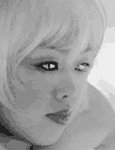Mariko Mori
dal 28/4/2007 al 1/9/2007
Segnalato da
28/4/2007
Mariko Mori
Groninger Museum, Groningen
On view both early and recent photography, drawings, and installations by the artist, who makes use of elements from both Japanese and Western art history combined with influences from modern popular culture, fashion, music, manga, and science fiction. This culminates in works such as the large architectonic installation "Wave Ufo".

Solo show
From 29 April to 2 September 2007, the Groninger Museum will present a solo
exhibition of the work of the Japanese artist Mariko Mori (Tokyo, 1967). Her first
large-scale museum exhibition in Holland will display both early and recent
photography, drawings, and installations. The highlight of the exhibition is the
all-encompassing interactive installation, Wave Ufo.
Mori (Tokyo, 1967) belongs to the most important young artists of this moment. She
studied at the Bunka Fashion College in Tokyo, after which she moved to London to
study art at the Chelsea Art College in 1988. From 1992 onward, she subsequently
followed an advanced educational programme for artists at the Whitney Museum in New
York, the city where she still lives and works, in addition to her base in Tokyo.
The artist gained international renown in the mid-nineties with her striking
multimedia work that consists of staged photography, 3-D video and installations.
The contrast between Utopia and reality is the focus of much of her work.
Mori makes
use of elements from both Japanese and Western art history, which she then combines
with influences from modern popular culture, design, fashion, music, manga, and
science fiction. This has culminated in works such as the large and spectacular
architectonic installation entitled Wave Ufo (1999-2002). Wave Ufo is a wonderfully
hybrid object, machine and sculpture all at the same time. It represents the
synthesis between the various categories of travel: three-dimensional, spiritual,
and temporal. The visitor is invited to enter the Wave Ufo to make a mental journey
in which the brain waves of the travellers are realistically reproduced and are a
component of a vision-like computer animation.
In her early work (mid-nineties), Mori was the main figure in her own work. Dressed
in bizarre fantasy outfits, she placed herself in various roles against the
background of metropolitan Tokyo. After this period, Mori presented photos and videos as a kind of fashionable stylized spiritual entity. Floating above water or in a cave, she seems to wish to
lead the viewer along the path to enlightenment. A major work from this period is
the photographic work Kumano (1997-1998) which is also on display in the exhibition.
This work and the series entitled Esoteric Cosmos (1996-1998) mark this spiritual
turnaround. Influenced by Japanese religions such as Shinto and Buddhism, and
motivated by the renewed Western quest for spirituality, Mori realized several
striking installations in this context, thus marking a new phase in her artistic
profession.
A significant part of the exhibition deals with Mori’s search for the
cosmological experience of our forefathers. For this purpose, she visited and
documented all kinds of megalithic monuments in both Japan and Scotland. These
formed the basis for photographs and a series of ultra-high-tech installations.
These works, which continuously change colour, such as Transcircle (2004), are a
present-day translation of their ancient models. In the same way as megaliths and
stone circles were used to make time tangible, these installations react to certain
events in the universe via a special computer programme.
Mariko Mori has exhibited internationally. Her work is the collection of prestigious
institutions such as the Centre Georges Pompidou in Paris; Israel Museum.
Museum of Contemporary Art, Chicago; Prada Foundation, Italy; The Los Angeles County
of Museum Art; Museum of Contemporary Art in Miami.
Groninger Museum
Museumeiland 1 - Groningen



